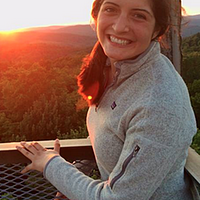What's the best way to watch Thursday's partial eclipse?
Loading...
If you're under clear North American skies, Thursday's partial eclipse could promise beautiful sights. But, before the moon slides between the sun and the Earth, leaving just a crescent of the sun visible, you'll need to know when to watch and how to do so safely.
Most of the US, excluding northern New England, will be able to see the eclipse. In Los Angeles, viewers should tune in at around 2 p.m. In Houston, the eclipse should be visible at around 5 p.m. Atlanta viewers should tune in around 6 p.m. If you're anywhere else, check NASA's list of US locations.
NASA expects that Alaska's capital will have the highest proportion of eclipse obscuration, or the fraction of the sun's area cut off by the moon, and eclipse magnitude, or the fraction of the diameter of the sun's diameter eclipsed by the Moon.
Astronomy experts urge caution, asking viewers to take care to ensure proper eye protection. Though the eclipse creates twilight-like lighting, the crescent of sun still visible in the partial eclipse can be just as harmful to exposed eyes as the full sun.
"Even when 99 percent of the Sun's surface (the photosphere) is obscured during the partial phases of a solar eclipse, the remaining crescent Sun is still intense enough to cause a retinal burn, even though illumination levels are comparable to twilight," B. Ralph Chou, an emeritus optometry and vision professor at the University of Waterloo, wrote in a 2012 NASA report.
In his report, Dr. Chou recommended shade number 14 welder's glass. A makeshift pinhole camera – created from leaves, a drainer, or a straw hat – can redirect the sun's glare safely, too.
But for those afraid of risking eye damage, and for those in the Northeast who are left out, observatories are streaming the eclipse online, too.
Slooh, a telescope service that streams online, will broadcast the partial eclipse live on its website. Sydney Observatory will do the same and expects to have about an hour of visible eclipse before the sun sets. The Mt. Lemmon SkyCenter will post live images at 1 p.m. MST Thursday on its website.
Solar eclipses occur several times each year, visible to different areas of the world. Last November's, a hybrid eclipse, was seen in the eastern Americas, in southern Europe and in Africa.





